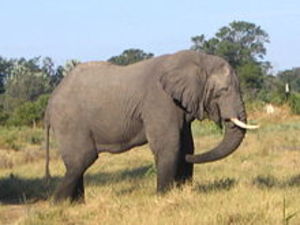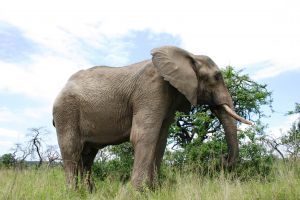There are only two major species of elephants left in the world – the Indian or Asian and the African elephant. There are two varieties of African elephant, known as the African Bush and the African Forest. Some elephant lovers even claim that the Cape elephant found in South Africa should be another subspecies. But any African types have glaring physical differences than the Asian elephant.
African Bush and Forest elephants have subtle differences. The mouth shape of the Forest is long and narrower than the shorter mouth of the Bush. The African Forest elephant usually is smaller than a Bush elephant.
Ears
The most glaring difference between the African and Asian types of elephants is the shape and size of the ears. African elephant ears are much bigger. Some say the ears are roughly shaped as the continent of Africa itself. Asian elephants have much smaller ears are said to resemble the shape of India.
Elephant ears act not only to gather in sound, but as air conditioners. The hotter, drier environment that the African elephant has to put up with means the ears are larger and thinner to help cool the blood that passes in them. This cooling of the blood in the head helps the brain not to overheat. This has helped African elephants live even in the Sahara desert.
Body Shape
Asian elephants tend to have a prominent bump at the top of their heads, so that their ears begin lower than the tops of their heads. Meanwhile, the African elephant’s prodigious ears are positioned higher than the highest top of their head. This bump (or lack thereof) is easiest to view when the animal is at profile.
Asian elephants also tend to have a convex spine (it arches up), while the African elephant often has a concave back (it arches down, so that the hindquarters and shoulders are higher than the middle of the back.)
Tusks
Both male and female African elephants grow large, curving tusks, which is why the species is threatened, even though the ivory trade is technically illegal. Only male Asian elephants grow tusks, although not all makes do. The Honolulu Zoo estimates that about seven percent of male Asian elephants in Sri Lanka are born with tusks. The females grow very small tusks and tend to prefer their mates to be “tuskers”.
African Forest elephants usually have straighter tusks than their Bush relations.
Trunk
Both Asian and African elephants are endowed with long trucks with a very sensitive tip. The Asian elephant has one finger-like digit at the very tip of the trunk, helping it to select a single blade of grass from a field. But the African elephant has two such digits.
Additional References
- Animal Records. Mark Carwardine. Sterling Publishing Company, Inc.; 2004.
- Elephant Memories: Thirteen Years in the Life of an Elephant. Cynthia Moss. University of Chicago Press; 2000.
- The Elephant Sanctuary.






